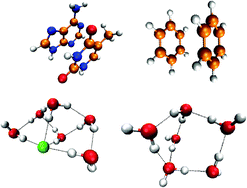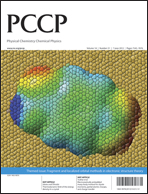Rapid computation of intermolecular interactions in molecular and ionic clusters: self-consistent polarization plus symmetry-adapted perturbation theory
Abstract
A method that we have recently introduced for rapid computation of intermolecular interaction energies is reformulated and subjected to further tests. The method employs monomer-based self-consistent field calculations with an electrostatic embedding designed to capture many-body polarization (the “XPol” procedure), augmented by pairwise symmetry-adapted perturbation theory (SAPT) to capture dispersion and exchange interactions along with any remaining induction effects. A rigorous derivation of the XPol+SAPT methodology is presented here, which demonstrates that the method is systematically improvable, and moreover introduces some additional intermolecular interactions as compared to the more heuristic derivation that was presented previously. Applications to various non-covalent complexes and clusters are presented, including geometry optimizations and one-dimensional potential energy scans. The performance of the XPol+SAPT methodology in its present form (based on second-order intermolecular perturbation theory and neglecting intramolecular electron correlation) is qualitatively acceptable across a wide variety of systems—and quantitatively quite good in certain cases—but the quality of the results is rather sensitive to the choice of one-particle basis set. Basis sets that work well for dispersion-bound systems offer less-than-optimal performance for clusters dominated by induction and electrostatic interactions, and vice versa. A compromise basis set is identified that affords good results for both induction and dispersion interactions, although this favorable performance ultimately relies on error cancellation, as in traditional low-order SAPT. Suggestions for future improvements to the methodology are discussed.

- This article is part of the themed collection: Fragment and localized orbital methods in electronic structure theory

 Please wait while we load your content...
Please wait while we load your content...